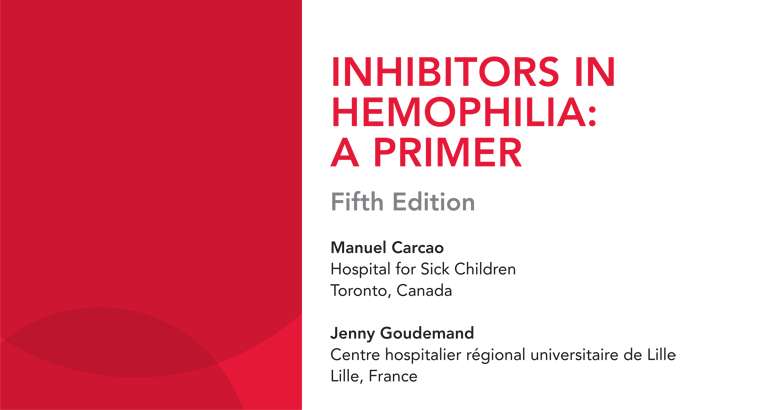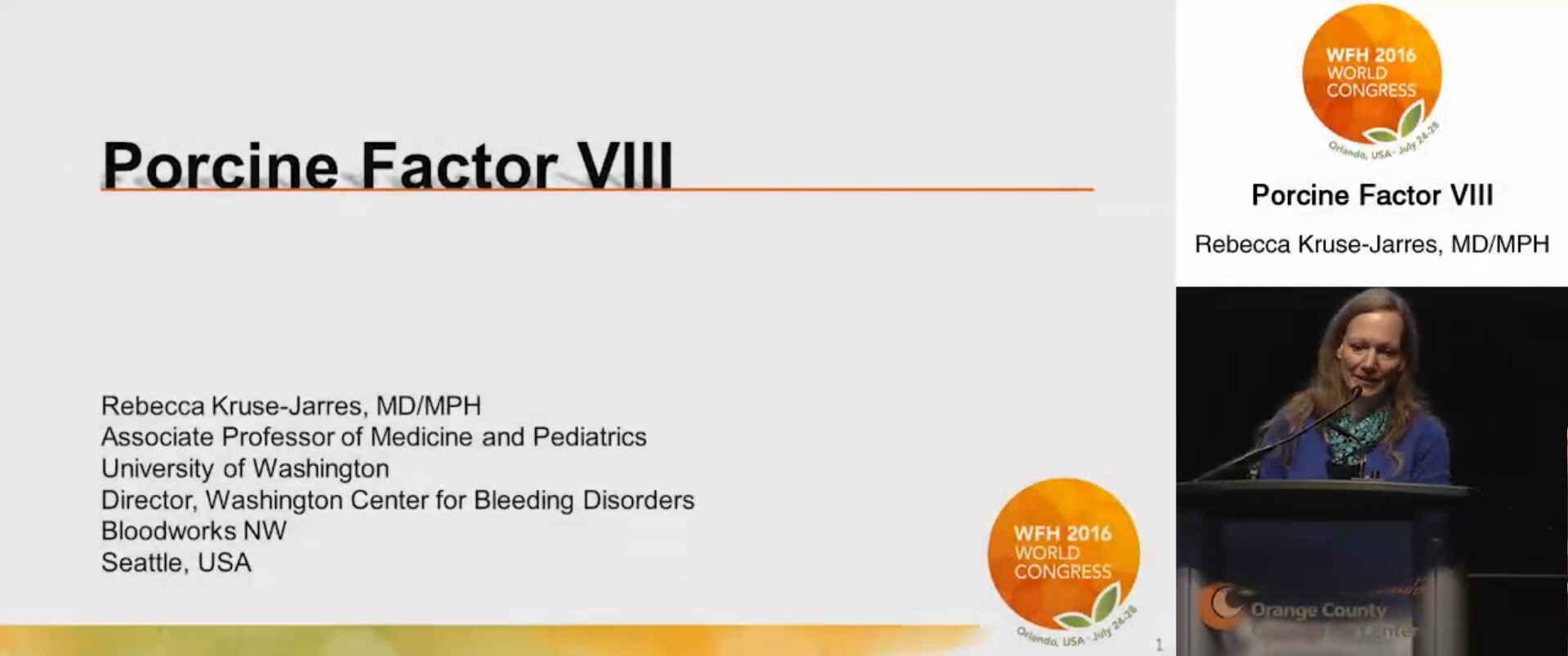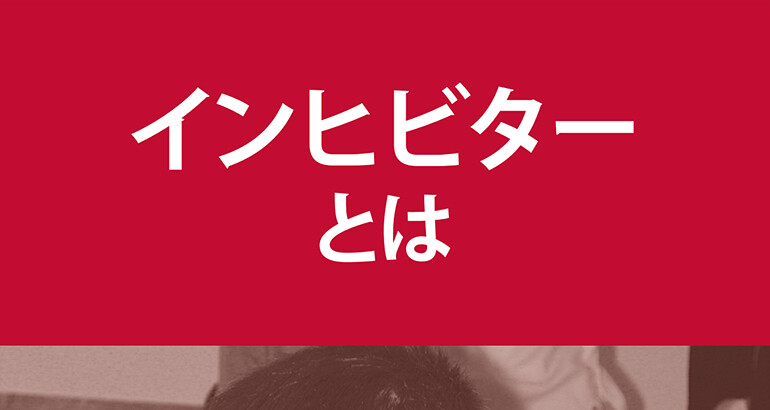Français / Español / 简体中文 / русский / العربية / 日本語
© 2025 World Federation of Hemophilia
Inhibitors are a serious complication that may occur when people with hemophilia (PWH) have an immune response to treatment with clotting factor concentrates (CFCs).
The immune system defends the body by developing antibodies against potentially harmful foreign substances. This is how we are protected from germs, viruses, and other sources of infection. In some PWH, their immune system may react to the proteins in factor concentrates as if they were harmful foreign substances. At the time of this publication (2022), there is no clear reason why this happens. The body then forms antibodies against CFCs. These antibodies, called inhibitors, prevent CFCs from stopping bleeding by preventing clot formation.
It is more difficult to control bleeds in PWH with inhibitors than in those without inhibitors. Inhibitors to factor VIII (FVIII) and factor IX (FIX) are associated with a higher disease burden, including increased risk of musculoskeletal complications, pain, physical limitations, and treatment challenges. All of these may impact a PWH’s physical functioning, capacity for physical activities, and quality of life.
Inhibitors occur more often in individuals with severe hemophilia than in those with moderate or mild hemophilia, and more often in people with hemophilia A (factor VIII deficiency) than in those with hemophilia B (factor IX deficiency).
What are the potential risk factors for developing inhibitors?
The risk of developing an inhibitor is associated with initial exposures to CFCs, with most inhibitors developing within the first 75 exposures to CFCs, and the greatest risk occurring within the first 20 exposures. An exposure is defined as a 24-hour period in which FVIII or FIX CFC is given. The risk of developing an inhibitor is associated with initial exposures to CFCs, therefore, children who begin treatment with CFCs early in their life may get an inhibitor at a young age. However, inhibitors may also occur later in life in individuals who start CFC treatment as an adult, which is the often due to missed or delayed diagnosis (this is usually the case in developing countries).
Approximately 30% of people with hemophilia A will develop inhibitors. In people with mild and moderate hemophilia A, inhibitors will develop 5%-10% of the time, mostly in older age after intensive CFC exposure (such as after surgery). In most cases, these are low-responding inhibitors (See Table 1 for more information).
Fewer individuals with hemophilia B develop inhibitors (around 5%). However, these inhibitors can lead to serious complications such as life-threatening allergic reactions (anaphylaxis) or kidney disease (nephrotic syndrome).
It is important for people with hemophilia A and B to be treated at a hemophilia treatment centre (HTC), particularly for the first 10–20 treatments with CFCs.
Specific factors that may increase the risk of developing inhibitors for an individual with hemophilia A are:
The signs and symptoms of inhibitors include:
A diagnosis based on signs and symptoms of inhibitors should be confirmed by repeated laboratory tests. Sometimes, inhibitors are discovered during a routine laboratory test.
PWH should be tested for inhibitors:
Inhibitors are often suspected if CFCs are no longer working to control bleeds, but should be confirmed by a blood test. Inhibitors are measured by the Bethesda assay or the Nijmegen-modified Bethesda assay. When inhibitors are present, the blood takes longer to clot and does not coagulate fully.
Inhibitor classification
Inhibitors are measured in Bethesda Units (BU), vary from one individual to another, and may also vary within the same person over time. Inhibitors are classified as “low responding” or “high responding” according to how strongly the person’s immune system reacts to CFCs.
A low-responding inhibitor is an inhibitor <5.0 BU that does not increase after subsequent factor treatment, whereas a high-responding inhibitor is an inhibitor ≥5.0 BU that does increase after subsequent factor treatment.
Low-responding inhibitors tend to be transient, meaning within 6 months they resolve on their own with no treatment. High-responding inhibitors tend to be persistent and are subject to an anamnestic response. An anamnestic response may occur when PWH who develop inhibitors stop receiving CFCs, and their level of inhibitors goes down (as there are no CFCs to react to). If tested again (and are still not receiving CFCs), their inhibitor is no longer detectable; however the next time they are exposed to CFCs (such as during surgery), their inhibitor levels will jump back up.
| LOW RESPONDING INHIBITORS | Inhibitor never exceeded 5 BU
|
| HIGH RESPONDING INHIBITORS | Inhibitor titer equaled or exceeded 5 BU at least once
|
A person with inhibitors should be treated at an HTC with specialized expertise. There are several different ways to treat bleeds in PWH who have inhibitors. The health care team will consider the following when planning treatment:
For people with hemophilia A and inhibitors who develop an acute bleed, the treatment should be based on whether the inhibitor is low responding or high responding (See Table 2).
Non-factor replacements, such as emicizumab, may be given as prophylactic treatment for PWH with inhibitors. Emicizumab can only be used as prophylaxis in people with hemophilia A, with or without inhibitors. It is not used to treat acute bleeding episodes or during surgery. PWH with inhibitors who experience breakthrough bleeds while on emicizumab, should receive FVIII or by-passing agents to treat the bleed.
| Hemophilia A | Hemophilia B | ||
|---|---|---|---|
| Low responding | FVIII CFC replacement therapy is preferred for acute bleeds. | Low responding | FIX CFC replacement therapy may be used for acute bleeds, but close monitoring is essential. |
| High responding |
Bypass agent therapy (rFVIIa or aPCC) or porcine FVIII should be used to treat bleeds. For people with Hemophilia A and inhibitors receiving emicizumab prophylaxis, rFVIIa is preferred over aPCC to treat a bleed. |
High responding or low responding with allergic reactions or anaphylaxis |
Bypassing agent (rFVIIa) may be used to control bleeding.
aPCC should not be used as it contains activated FIX, which can lead to an allergic reaction, anaphylaxis, as well as risk for thrombosis. |
aPCC, activated prothrombin complex concentrate; rFVIIa, recombinant activated factor VII.
Treatment of inhibitors is one of the biggest challenges in hemophilia care today. It is possible to get rid of (eradicate) inhibitors using a technique called immune tolerance induction (ITI). However, this type of treatment requires specialized medical expertise, is expensive, and takes a long time.
ITI therapy is an option that may get rid of inhibitors. ITI involves giving PWH with inhibitors regular doses of CFCs over time (from several months to years). This continuous exposure to CFCs will exhaust the antibodies created by the immune system, and results in the immune system stopping the production of inhibitors (downregulation). Higher doses of CFCs may lead to faster exhaustion of the immune system, and lower doses may take longer.
ITI is effective in 70-80% of people with severe hemophilia A, but may be less successful in people with moderate or mild hemophilia A. Although the treatment with ITI is similar for people with hemophilia B, real-life experience is limited, and the success rate is lower.
If PWH with inhibitors do not respond to ITI, there are other treatments, such as bypassing agents and non-factor replacement therapies, that may be used to work around inhibitors and help prevent bleeding.
It is important to include ongoing PWH and caregiver education and psychosocial support in the management of PWH with inhibitors. Clinicians, PWH, caregivers, and the HTC team should maintain good communication through a well-coordinated plan of care. Surveillance and prompt recognition of inhibitors is an important component in preventing and managing inhibitors. Treatment and management of inhibitors are key components in hemophilia comprehensive care.



